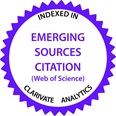Abstract
Financial status of an entity is determined by two streams of resources: one leaving and one entering it. Streams of resources leaving the entity (products sold) illustrate revenues; and streams entering the entity, representing resources for future usage, illustrate costs. Cost management is one of the most important aspects of the management system in modern enterprise. As it was said, costs represent the value of resources used within an entity's continuous activities. They directly influence the entity's results, so they are the basic element of the financial account. It may help to determine the optimum level of costs for maximizing an entity's profits. The paper shows the rules and methods of modelling information structures for cost accounting systems. First of all, the author presents basic, functional, and methodological assumptions of cost accounting system as a key information system in an entity. Also, the techniques and procedures of cost processing for decision making are discussed. Finally, the author presents the basic features of cost accounting for decision-making processes.
Abstrakt
Sytuacja finansowa każdego przedsiębiorstwa jest wynikiem wzajemnego kształtowania się dwóch podstawowych strumieni - przychodów i kosztów. Można więc mówić, że jednym z aspektów zarządzania przedsiębiorstwem jest zarządzanie kosztami. Koszty są wartościowym wyrazem celowego zużycia zasobów majątkowych przedsiębiorstwa związanego z jego podstawową działalnością. Decydują one więc bezpośrednio o wyniku finansowym przedsiębiorstwa, są podstawowym elementem rachunku ekonomicznego, mającego doprowadzić do ich optymalnego kształtowania się z punktu widzenia maksymalizacji wyniku finansowego. Celem artykułu jest przedstawienie zasad i metod struktur informacyjnych w systemach rachunku kosztów. W pierwszej części zaprezentowano podstawowe założenia funkcjonalne i metodologiczne rachunku kosztów jako kluczowego systemu informacyjnego przedsiębiorstwa, w kolejnych częściach artykułu omówiono zasady przetwarzania kosztów dla celów decyzyjnych. Ostatnia cześć opracowania zawiera prezentację podstawowych cech rachunku kosztów dla celów zarządczych.
Recommended Citation
Świderska-Rak, D. (2005). Modelowanie struktur informacyjnych w zintegrowanych systemach wspomagających rachunek kosztów. Problemy Zarządzania, 3(7), 166-173. Retrieved from https://press.wz.uw.edu.pl/ems/vol3/iss7/14
First Page
166
Last Page
173
Page Count
7
Publisher
University of Warsaw








